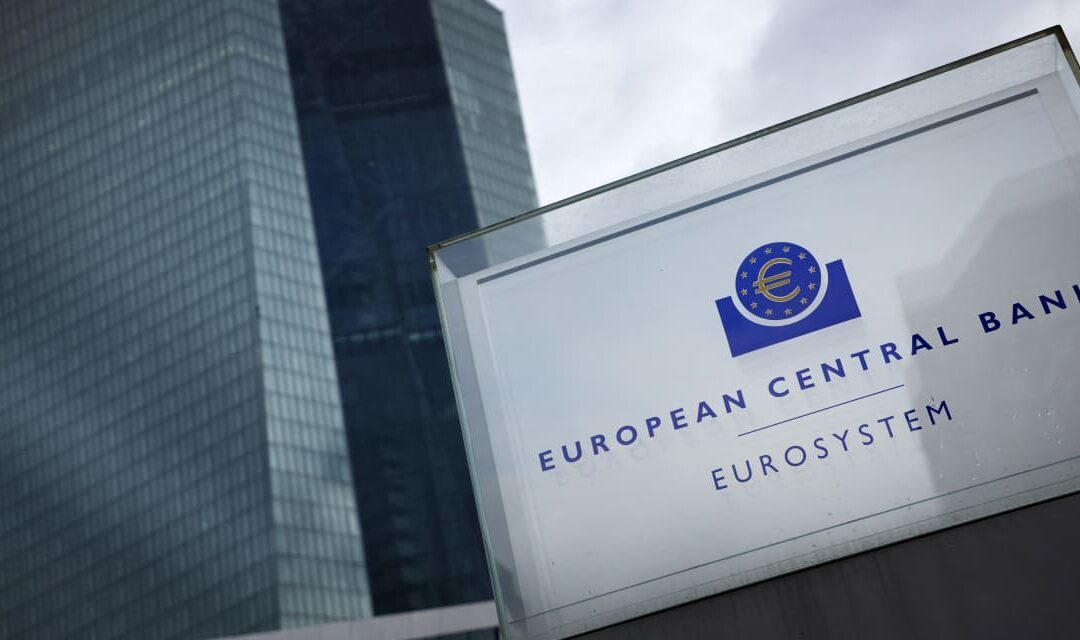European Central Bank officials have been mostly matching their U.S. peers in pushing back against investors’ optimism that interest rates will be cut swiftly in coming months.
The ECB is widely expected to leave its deposit rate at a record high of 4% after its monetary policy meeting on January 25, despite inflation having fallen from a peak of more than 10% in late 2022 to the latest reading of 2.9% .
Though that means inflation is only just above the central bank’s 2% target, officials have fought back against the markets’ betting that borrowing costs may be reduced to 2.5% by the December meeting, lest price pressures flare up again.
“[The] history of high inflation episodes tells us that if central banks try to normalize too quickly, before the problem is really conquered, then we get another inflation wave, and then another wave of interest rate hikes. That would be a far worse scenario,” said ECB chief economist Philip Lane in an interview over the weekend.
Also in the last few days Bundesbank President Joachim Nagel said “I think it’s too early to talk about cuts”, and Austria central bank Governor Robert Holzmann went so far as to say “We should not bank on the rate cut at all for 2024.”
Speaking in Davos on Tuesday, Governor of the Bank of France Governing Francois Villeroy de Galhau told Bloomberg that the ECB is likely to start lowering borrowing costs this year, but he too said the eurozone central bank will “probably be a bit more patient” than the market pricing suggests.
“So there was a consistent message from various speakers on the hawk-dove spectrum that didn’t sound as though a Q1 rate cut was on the agenda,” said Jim Reid, strategist at Deutsche Bank.
The monetary-policy sensitive 2-year German government yield
BX:TMBMKDE-02Y
was up 8 basis points since the start of the week to 2.60%, pressuring equities and pushing the DAX index
DX:DAX
close to a one month low.
Still, early Tuesday, investors were betting on at least a 25 basis point cut of the ECB’s deposit rate by the April meeting.
Meanwhile, in the U.K. the 2-year gilt yield
BX:TMBMKGB-02Y
was little changed at 4.161% after labor data showed Britain’s wage growth slowed to 6.5% in the three months to November, down from 7.2% in the three months to October.
The data showed regular private-sector wage growth on a 3-month to 3-month-annualised basis of 2.5%, which is now below the rate consistent with the Bank of England’s 2% inflation target, according to Jack Meaning, U.K. chief economist at Barclays.
However, Andrzej Szczepaniak, Europe economist at Nomura, said the jobs report supported his view that the Bank of England can wait a bit longer versus market expectations before beginning its cutting cycle.
“Markets are almost fully priced for May as the first cut versus our view that the Bank will want to hold on a bit longer and begin to cut only in August, taking more time to enable the MPC [monetary policy committee] to be certain that pent-up inflationary pressures are all out of the pipes,” Szczepaniak added.
Still, sterling
GBPUSD,
followed yields lower, easing 0.8% to £1.2625. “Looking ahead this week, traders receive the latest UK CPI readings [on Wednesday] which have the potential to drive GBP lower still if a further fall is seen,” said James Harte, analyst at Tickmill Group.









